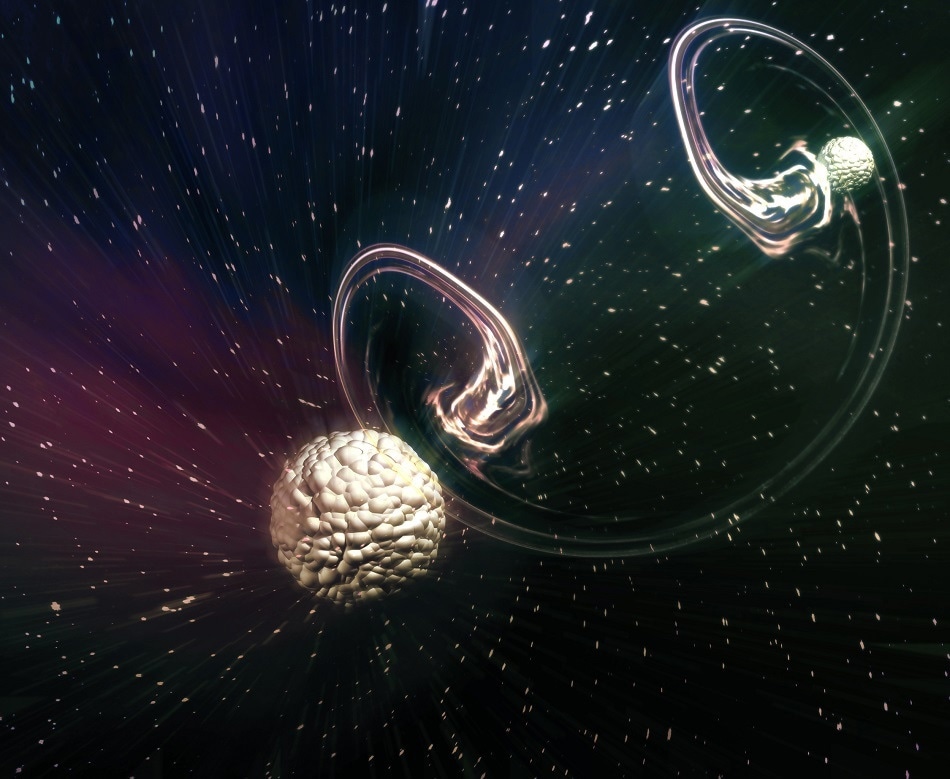 By Meet A. MoradiyaJul 30 2018
By Meet A. MoradiyaJul 30 2018In the early 20th century, scientists thought that the basic phenomenon of general relativity should apply to everything in nature.

Image Credit: Shutterstock.com/GiroScience
At the level of atoms and sub-atomic particles, objects behave very differently than everyday objects and quantum theory is an attempt to explain the behavior of energy and matter at ultra-small scale.
Newton’s physics states that a body can pass a barrier only if it has enough energy to jump over it. Therefore, if the object has lower energy than that needed to jump over the obstacle, in Newton’s physics, the probability of finding the object on the other side of the barrier is zero.
In the quantum world, a particle with energy less than required to jump the energy region has a non-zero probability of being found on the other side of the barrier. Quantum tunneling is the penetration of an electron into an impenetrable barrier that is classically forbidden.
In 1905, Albert Einstein introduced the special theory of relativity, it was made up of two major postulates: first that the speed of light in a vacuum has the same value for all observers; and second that the laws of physics are the constant in all inertial frames of reference.
After 10 years, Einstein published his theory of general relativity; in it, he considered that the non-inertial frames and gravitation factor into the relativistic view of the universe. The famous quote about space-time and matter was summarized by the American physicist John Wheeler as follows:
“Space-time tells matter how to move; matter tells space-time how to curve”
General relativity and quantum mechanics are fundamentally different models that have different configurations. It is not simply a problem of scientific terms however, it’s clash of genuinely incompatible explanations of reality. General relativity and quantum are like “smooth” and “stocky” respectively.
In general relativity, actions are continuous and punctual, as a result gravity is given as a consequence of the curvature of the frame of reference. In quantum mechanics, actions made by the interaction of atomic and subatomic particles occur in quantum jumps, when an electron with lower kinetic energy is able to exist on the other side of obstacles with higher potential energy.
Quantum rules defy fundamental laws of classical physics. Dutch scientists defied the local effect and additionally, they showed that two particles, particularly electrons, could influence each other immediately, even though they were a mile apart. When you try to explain continuous general relativity in a stocky quantum mechanics style or vice versa, things go very wrong
Relativity provides odd answers when you try to reduce it to quantum size, eventually descending to infinite values in its description of gravity. In the same way, quantum mechanics run into the serious problem when you expand the dimensions.
Einstein unleashed a new way of seeing physics that led to the modern concept of the Big Bang and black holes, and the time adjustments important to your phone’s GPS. Similarly, quantum mechanics did much more than reformulate James Clerk Maxwell’s textbook equations of electricity, magnetism, and light. It provided the conceptual tools for the Large Hadron Collider (LHC), solar cells, all of modern microelectronics.
Sources
- https://www.theguardian.com/news/2015/nov/04/relativity-quantum-mechanics- universe-physicists
- https://www.bu.edu/
- http://www.glensvensson.org/articles/04112015-relativity-versus-quantum-mechanics-the-battle-for-the-universe
- https://www.infoplease.com/science/universe/theories-universe-quantum-mechanics-vs-general-relativity
Disclaimer: The views expressed here are those of the author expressed in their private capacity and do not necessarily represent the views of AZoM.com Limited T/A AZoNetwork the owner and operator of this website. This disclaimer forms part of the Terms and conditions of use of this website.